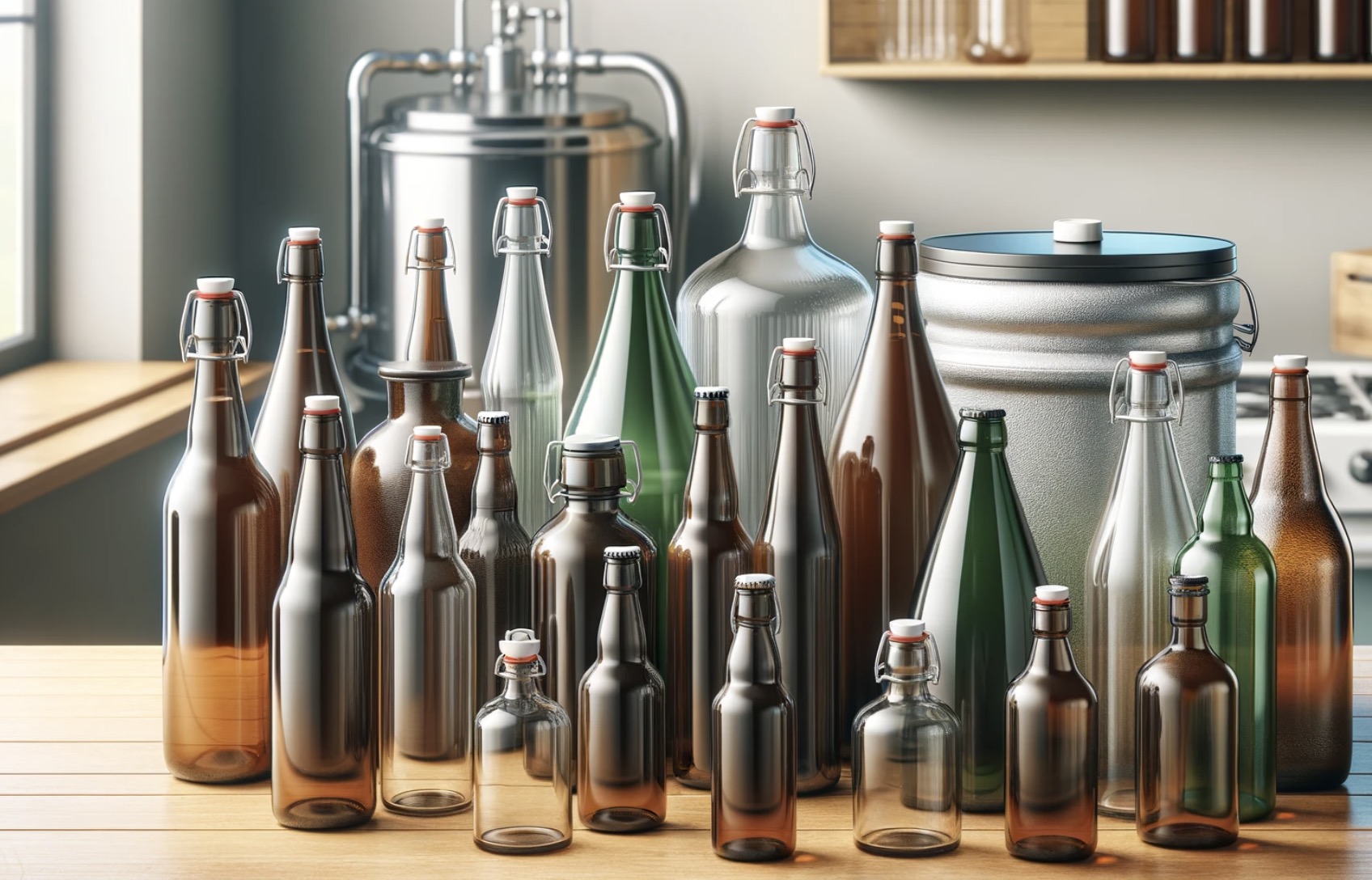The best cold crash temperature for wine, mead, cider, and beer is usually around 32-40°F (0-4°C).
This temperature range helps to drop yeast and other particles out of suspension, clarifying the beverage and improving its flavor.
Introduction to Cold Crashing
Cold crashing is a technique used by homebrewers and professional brewers alike to improve the clarity and stability of their fermented beverages. By rapidly cooling the liquid after fermentation, yeast and other particulates are encouraged to fall out of suspension, leaving a clearer product with fewer off-flavors.

In this blog post, we will explore the best cold crash temperatures for various types of alcoholic beverages, including wine, mead, cider, and beer. We will also discuss the benefits of cold crashing and tips for achieving the best results in your homebrewing endeavors.
What is Cold Crashing?
Cold crashing is the process of rapidly cooling a fermented beverage to encourage the precipitation of yeast and other particulates. The term “crashing” refers to the rapid drop in temperature, which causes the yeast and other suspended solids to “crash” out of the liquid, effectively clarifying the beverage. This process is typically used for beer, wine, mead, and cider to improve their appearance, flavor, and shelf stability.
Cold Crashing Wine
The ideal cold crash temperature for wine is around 32-35°F (0-2°C).
Wine can benefit greatly from cold crashing, as it helps to remove excess yeast, proteins, and other particles that can cause off-flavors or haze in the final product. Cold crashing wine at this temperature range can also help to prevent the formation of tartrate crystals, which can form when wine is stored at lower temperatures. By cold crashing your wine, you will be improving its overall clarity and stability.
Tips for Cold Crashing Wine
1. Make sure your wine has completed fermentation before beginning the cold crash process. You can use a hydrometer to measure the specific gravity and ensure it has reached the desired level.
2. Slowly lower the temperature of your wine to the desired cold crash temperature over the course of a day or two. This will help to prevent thermal shock, which can cause unwanted changes in the wine’s characteristics.
3. Allow your wine to cold crash for at least 3-5 days to achieve optimal results.
4. After cold crashing, carefully rack your wine off the sediment that has settled at the bottom of your fermentation vessel.
Cold Crashing Mead
The best cold crash temperature for mead is generally around 32-40°F (0-4°C).
Similar to wine, mead can also benefit from cold crashing to remove excess yeast and particulates that can cause haze and off-flavors. Mead is typically less prone to the formation of tartrate crystals, so the temperature range can be slightly more flexible. Cold crashing mead will result in a clearer, more stable final product with a cleaner flavor profile.
Tips for Cold Crashing Mead
1. Ensure that your mead has completed fermentation before starting the cold crash process. Use a hydrometer to measure the specific gravity and confirm that it has reached your desired level.
2. Gradually lower the temperature of your mead to the target cold crash temperature over a day or two to prevent thermal shock.
3. Allow your mead to cold crash for at least 3-5 days to achieve the best results.
4. After cold crashing, carefully rack your mead off the sediment that has settled at the bottom of your fermentation vessel.
Cold Crashing Cider
The optimal cold crash temperature for cider is around 32-40°F (0-4°C).
Cold crashing cider helps to remove excess yeast and other particulates that can cause haze and off-flavors in the final product. By bringing your cider to the appropriate cold crash temperature, you can improve its overall clarity, stability, and flavor profile.
Tips for Cold Crashing Cider
1. Make sure your cider has completed fermentation before beginning the cold crash process. Use a hydrometer to measure the specific gravity and confirm that it has reached your desired level.
2. Gradually lower the temperature of your cider to the target cold crash temperature over a day or two to prevent thermal shock.
3. Allow your cider to cold crash for at least 3-5 days to achieve optimal results.
4. After cold crashing, carefully rack your cider off the sediment that has settled at the bottom of your fermentation vessel.
Cold Crashing Beer
The ideal cold crash temperature for beer is around 32-40°F (0-4°C).
Cold crashing beer is an excellent way to improve its clarity and stability, as it helps to remove excess yeast, proteins, and other particulates that can cause haze and off-flavors. By bringing your beer to the appropriate cold crash temperature, you can enhance its appearance and flavor, making it more enjoyable to drink.
Tips for Cold Crashing Beer
1. Ensure that your beer has completed fermentation before starting the cold crash process. Use a hydrometer to measure the specific gravity and confirm that it has reached your desired level.
2. Gradually lower the temperature of your beer to the target cold crash temperature over a day or two to prevent thermal shock.
3. Allow your beer to cold crash for at least 48 hours to achieve the best results. Some brewers prefer to cold crash for up to a week for even better clarity.
4. After cold crashing, carefully rack your beer off the sediment that has settled at the bottom of your fermentation vessel.
Conclusion: Best Cold Crash Temperatures
In conclusion, the best cold crash temperatures for wine, mead, cider, and beer are typically around 32-40°F (0-4°C). By following the tips and guidelines provided in this blog post, you can achieve improved clarity, stability, and flavor in your homebrewed beverages. Happy brewing!
10 Key Facts About Cold Crashing
1. Cold crashing helps to improve the clarity and stability of fermented beverages.
2. The process involves rapidly cooling the liquid to encourage the precipitation of yeast and other particulates.
3. Wine, mead, cider, and beer can all benefit from cold crashing.
4. The ideal cold crash temperature for wine is around 32-35°F (0-2°C).
5. The best cold crash temperature for mead is generally around 32-40°F (0-4°C).
6. The optimal cold crash temperature for cider is around 32-40°F (0-4°C).
7. The ideal cold crash temperature for beer is around 32-40°F (0-4°C).
8. Gradual temperature changes are key to preventing thermal shock during the cold crash process.
9. Cold crashing should be done after fermentation has completed, as confirmed by a consistent specific gravity reading.
10. Careful racking after cold crashing is essential to separate the clarified liquid from the sediment.
FAQs
What is cold crashing mead?
Cold crashing mead is a process where the mead is chilled to near-freezing temperatures to encourage the yeast and other sediment to settle to the bottom of the container. This results in a clearer and cleaner final product.
When should you cold crash?
Cold crashing is typically done after fermentation is complete and before bottling or kegging. It is recommended to cold crash for 24-48 hours at a temperature of around 34-40°F (1-4°C) to help clarify the beer by causing the yeast and other particles to settle at the bottom of the fermenter.
Is cold crashing necessary?
Cold crashing is not necessary in the brewing process, but it can help improve the clarity and flavor of the final product. It involves lowering the temperature of the beer to near freezing for a period of time before bottling or kegging. This causes the yeast and other particles to settle to the bottom, resulting in a clearer beer with a smoother taste.
How do you cold crash cider?
To cold crash cider, you need to transfer the fermented cider to a clean, sanitized container and place it in a refrigerator or cold room for several days. The cold temperature will cause the yeast and other sediment to settle to the bottom of the container, resulting in a clear and crisp cider.
What temperature do you cold crash cider at?
Cider is typically cold crashed at a temperature between 32°F and 40°F (0°C to 4°C) for 1-2 weeks to clarify the cider and improve its flavor.
What temperature should cold crash cider be?
Cold crashing cider should be done at a temperature between 32°F and 40°F (0°C and 4°C) for a period of 24 to 48 hours.




